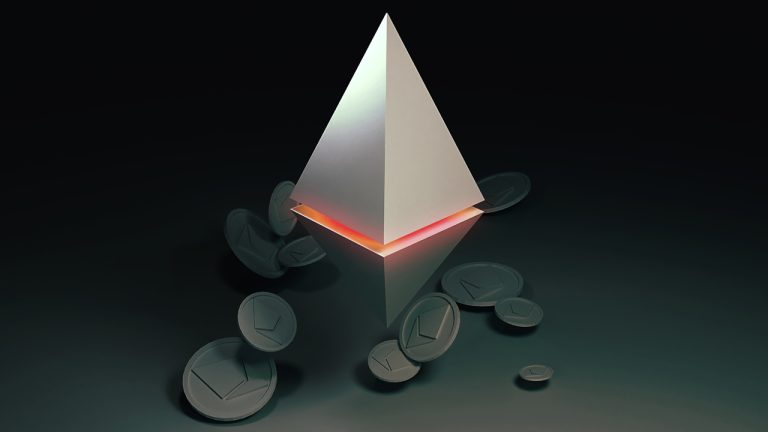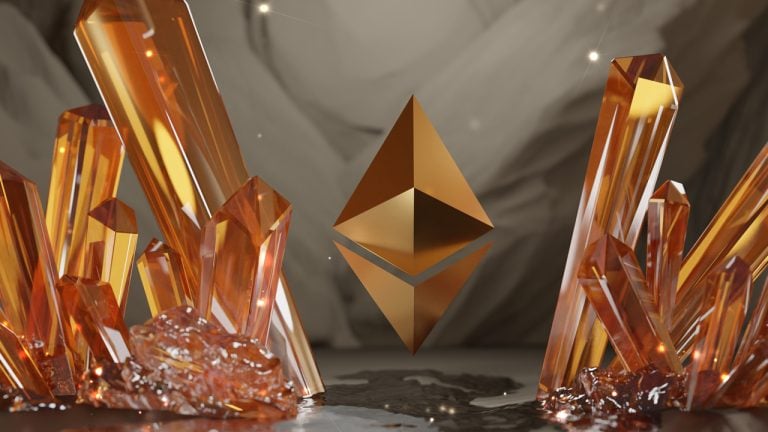 After the transition from proof-of-work (PoW) to proof-of-stake (PoS), Ethereum’s annual issuance rate has been reduced to negative 0.057%, according to statistics 158 days after The Merge. The metrics indicate that more ethereum tokens have been removed than issued, and if the chain were still under PoW consensus, 1,823,678 ether would have been minted to […]
After the transition from proof-of-work (PoW) to proof-of-stake (PoS), Ethereum’s annual issuance rate has been reduced to negative 0.057%, according to statistics 158 days after The Merge. The metrics indicate that more ethereum tokens have been removed than issued, and if the chain were still under PoW consensus, 1,823,678 ether would have been minted to […] Its been 105 days since Ethereum transitioned from a proof-of-work (PoW) blockchain to a proof-of-stake (PoS) network and the number of Ethereum validators is set to surpass 500,000 in 2023. According to metrics, Ethereum’s issuance rate of new coins has dropped considerably and only 4,790.45 ether has been minted since The Merge took place on […]
Its been 105 days since Ethereum transitioned from a proof-of-work (PoW) blockchain to a proof-of-stake (PoS) network and the number of Ethereum validators is set to surpass 500,000 in 2023. According to metrics, Ethereum’s issuance rate of new coins has dropped considerably and only 4,790.45 ether has been minted since The Merge took place on […] Months before Ethereum transitioned from proof-of-work (PoW) to proof-of-stake (PoS), a simulation of The Merge had shown the network’s issuance rate would drop following the ruleset change. Statistics now show that the simulation’s predictions have come to fruition as the network’s issuance rate has slowed significantly since September 15, following the Paris Upgrade that triggered […]
Months before Ethereum transitioned from proof-of-work (PoW) to proof-of-stake (PoS), a simulation of The Merge had shown the network’s issuance rate would drop following the ruleset change. Statistics now show that the simulation’s predictions have come to fruition as the network’s issuance rate has slowed significantly since September 15, following the Paris Upgrade that triggered […] According to current metrics, the Ethereum blockchain has burned 2.35 million ether since the implementation of Ethereum Improvement Proposal (EIP) 1559. The $8.10 billion in value was burned over the course of nine months and during the last seven days, 18,110 ether worth $34.9 million was destroyed. 2.35 Million Ethereum Burned — Ethereum Dev Says […]
According to current metrics, the Ethereum blockchain has burned 2.35 million ether since the implementation of Ethereum Improvement Proposal (EIP) 1559. The $8.10 billion in value was burned over the course of nine months and during the last seven days, 18,110 ether worth $34.9 million was destroyed. 2.35 Million Ethereum Burned — Ethereum Dev Says […]
A spike in gas fees and ETH burn rates has produced almost 800 deflationary blocks so far.
The theoretical deflationary properties of Ethereum’s London upgrade last week have already been seen in action on the blockchain with almost 800 "deflationary blocks" produced.
A spike in the Ethereum transaction fee burn rate has resulted in at least two hours when the supply was deflationary. The network has come under heavy load over the past couple of days which has resulted in a lot more gas being burnt.
Around four hours ago (as of 22.00 UTC), the ‘ETH Burn Bot’ recorded an instance when 545 ETH was burnt within a one-hour period. With Ethereum issuance reported at 532 ETH per hour, it resulted in the asset seeing deflation of minus 13 ETH for that brief period.
A larger deflationary burn was detected by the ETH Burn Bot a couple of hours later in which 945 tokens were burnt within the hour resulting in a temporary negative issuance of -417 ETH. It calculated this as an annualized deflation rate of -3.12%.
945.1184 $ETH burned last hour.
— ETH Burn Bot (@ethburnbot) August 10, 2021
Issuance: 528.0000 ETH
Net Change: -417.1184 ETH
Annualized: -3.12%
2021-08-10 22:00-23:00 UTC
Last Block: 13000300
Cumulative : 24,942.1282 ETH
When the amount of ETH burned is greater than the mining reward, deflationary blocks are produced and the supply temporarily decreases. This has been observed on a tracker from advisory firm Carbono which is currently reporting that there have been 791 deflationary blocks so far, which it defines as blocks where the burnt fee exceeded the mined ETH.

When the London hard fork was deployed on August 5, it introduced the highly anticipated EIP-1559 upgrade that adjusted the transaction fee calculation system. Part of that adjustment introduced a mechanism that burns a portion of the base fees collected.
According to ultrasound.money which tracks the amount burnt, 25,600 ETH has been burnt at the time of writing. At current prices, this equates to around $80 million in just under a week.
The Ethereum economy is not expected to see sustained deflation until the fee burning is combined with the reduction in block reward issuance as a result of the merge to proof-of-stake at some stage in 2022.
Related: Ethereum network burns $395K ETH per hour after London upgrade
The news is not all good for Ethereum users however, as gas prices have increased again. According to Bitinfocharts, the average transaction price has climbed to $20 from a low of around $4 in late July. Etherscan’s gas tracker is reporting as much as $28.60 for a token swap on Uniswap.
The surge in demand for Ethereum blockspace has been driven by NFTs with the OpenSea marketplace, Gala Games’ Vox, and Axie Infinity all in the top 4 for gas burning with a combined total of 2,200 ETH, or $7 million burned so far.

At current burn rates, 2.3 ETH per minute, or $6,600 is going up in smoke.
Approximately 2.3 ETH is being burnt every minute through the new transaction fee mechanism introduced in Ethereum’s London upgrade on August 5.
The highly anticipated London hard fork went live on Wednesday this week, ushering in the EIP-1559 upgrade that adjusted gas fees. Part of that adjustment introduced a mechanism that burns some of the base fees collected.
The total amount of ETH burnt since the upgrade went live around 14 hours ago is roughly 3,395 ETH according to the various counters available. Etherchain reports an average burn rate of 2.36 ETH per minute. This equates to $6,596 per minute, or around $395,000 of ETH going up in metaphorical smoke every hour at current prices.
An alternative counter called Ultrasound.money reports a total burn of 3,390 ETH worth a whopping $9.5 million at the current ETH price around $2,800. The tracker reports that the popular NFT marketplace OpenSea is the top ETH burner with 374 ETH, or just over $1 milliondollars, destroyed since the upgrade was launched.
In second place was Uniswap’s version 2 which had burned 263 ETH, or $740,000, at the time of writing. Uniswap founder, Hayden Adams, commented on the burn rate stating that if things continue at the same rate, the protocol could burn as much as 350,000 ETH, or almost $1 billion per year.
It’s been 2 hours since the launch of EIP-1559
— Hayden Adams (@haydenzadams) August 5, 2021
@Uniswap (v2+v3) is doing its part burning ~80 ETH so far
❤️❤️ At this rate, Uniswap alone is burning 350,000 ETH - close to $1b worth - per year
Congrats to everyone who made EIP-1559 happen. Huge win for Ethereum
The Bankless DeFi newsletter threw around some figures in an attempt to predict the impact on future supply. Since the base fee is anywhere between 25% and 75% of the total transaction fee, manual calculation and predictions are difficult.
It modeled burn rates within this range using data on fees generated in 2021 and concluded:
“Annualizing these figures, this means that between 800,000 — 2.4 million ETH is projected to be burned in 2021.”
When combined with the reduction in block reward issuance from the merge to proof-of-stake, the fee burning could lead to Ethereum having a deflationary supply, which would see it fulfill the increasingly used meme of “ultrasound money”.
 During the first three months of 2021, the cryptocurrency ethereum has shined as 90-day statistics highlight the digital asset has climbed close to 80% in value. On Monday, former Ark Invest analyst James Wang published a detailed summary highlighting the Ethereum project’s first-quarter financial results. Wang’s comprehensive Ethereum analysis showcases a myriad of data points […]
During the first three months of 2021, the cryptocurrency ethereum has shined as 90-day statistics highlight the digital asset has climbed close to 80% in value. On Monday, former Ark Invest analyst James Wang published a detailed summary highlighting the Ethereum project’s first-quarter financial results. Wang’s comprehensive Ethereum analysis showcases a myriad of data points […]